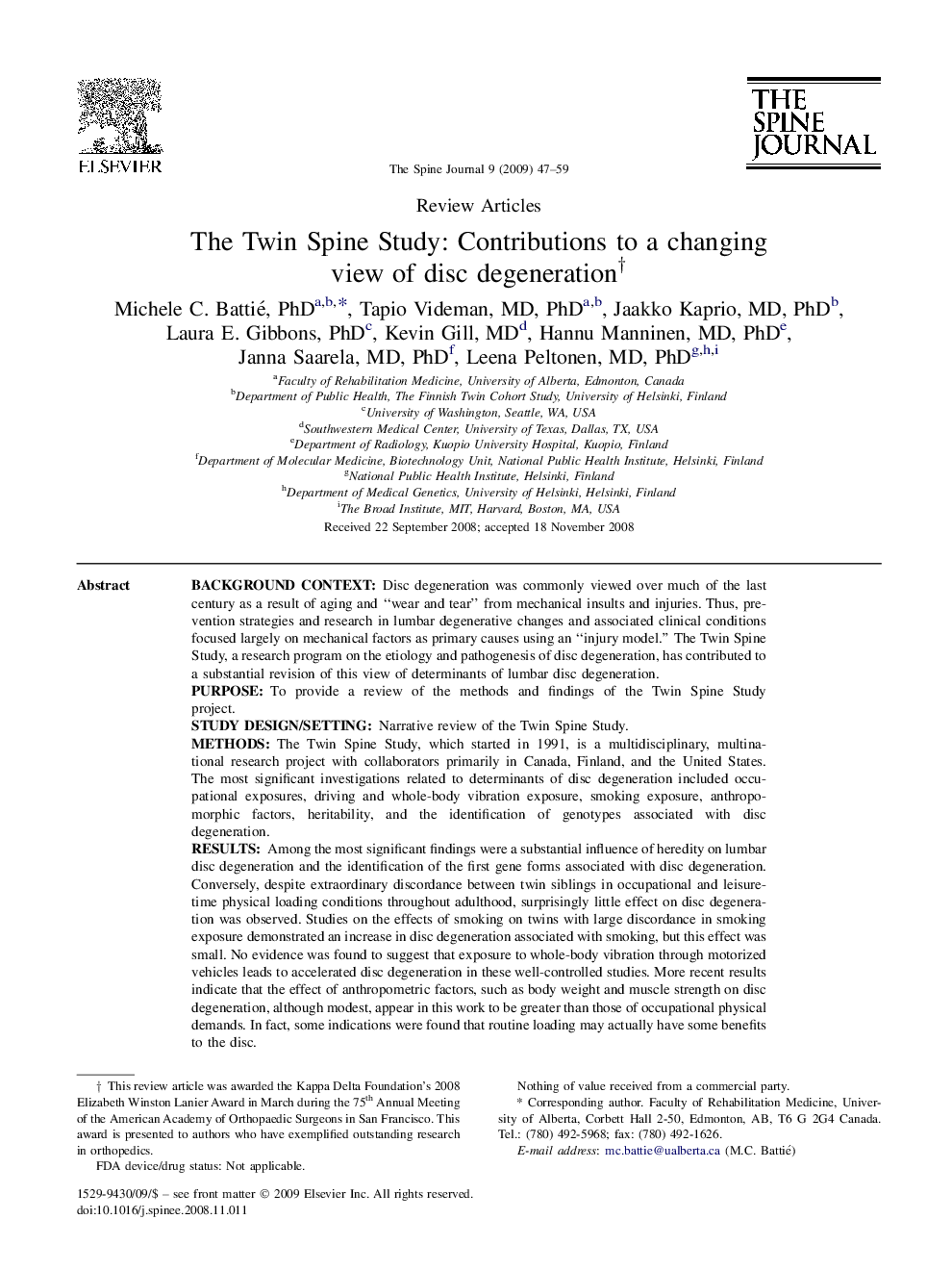| کد مقاله | کد نشریه | سال انتشار | مقاله انگلیسی | نسخه تمام متن |
|---|---|---|---|---|
| 4099069 | 1268631 | 2009 | 13 صفحه PDF | دانلود رایگان |

Background contextDisc degeneration was commonly viewed over much of the last century as a result of aging and “wear and tear” from mechanical insults and injuries. Thus, prevention strategies and research in lumbar degenerative changes and associated clinical conditions focused largely on mechanical factors as primary causes using an “injury model.” The Twin Spine Study, a research program on the etiology and pathogenesis of disc degeneration, has contributed to a substantial revision of this view of determinants of lumbar disc degeneration.PurposeTo provide a review of the methods and findings of the Twin Spine Study project.Study design/settingNarrative review of the Twin Spine Study.MethodsThe Twin Spine Study, which started in 1991, is a multidisciplinary, multinational research project with collaborators primarily in Canada, Finland, and the United States. The most significant investigations related to determinants of disc degeneration included occupational exposures, driving and whole-body vibration exposure, smoking exposure, anthropomorphic factors, heritability, and the identification of genotypes associated with disc degeneration.ResultsAmong the most significant findings were a substantial influence of heredity on lumbar disc degeneration and the identification of the first gene forms associated with disc degeneration. Conversely, despite extraordinary discordance between twin siblings in occupational and leisure-time physical loading conditions throughout adulthood, surprisingly little effect on disc degeneration was observed. Studies on the effects of smoking on twins with large discordance in smoking exposure demonstrated an increase in disc degeneration associated with smoking, but this effect was small. No evidence was found to suggest that exposure to whole-body vibration through motorized vehicles leads to accelerated disc degeneration in these well-controlled studies. More recent results indicate that the effect of anthropometric factors, such as body weight and muscle strength on disc degeneration, although modest, appear in this work to be greater than those of occupational physical demands. In fact, some indications were found that routine loading may actually have some benefits to the disc.ConclusionsThe once commonly held view that disc degeneration is primarily a result of aging and “wear and tear” from mechanical insults and injuries was not supported by this series of studies. Instead, disc degeneration appears to be determined in great part by genetic influences. Although environmental factors also play a role, it is not primarily through routine physical loading exposures (eg, heavy vs. light physical demands) as once suspected.
Journal: The Spine Journal - Volume 9, Issue 1, January 2009, Pages 47–59